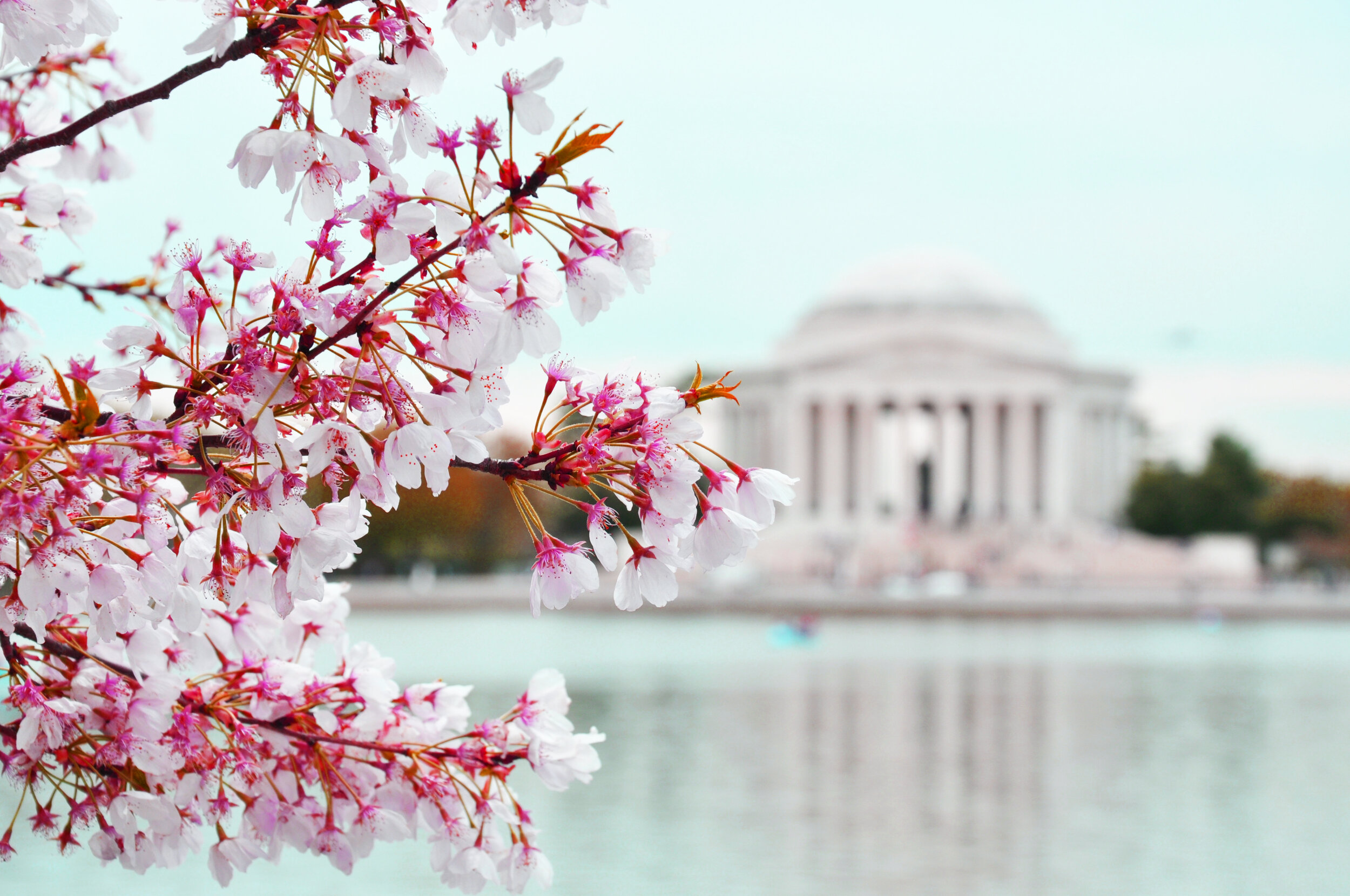The Tidal Basin
The National Mall Tidal Basin sits in America’s front yard and comprises beloved national monuments such as the Jefferson Memorial, Franklin Delano Roosevelt Memorial and the Martin Luther King, Jr. Memorial. This complex, iconic public landscape’s architecture and open space captures individuals and events that have defined our nation and celebrates cherished American values. The iconic National Mall cherry trees that encircle the basin also bring 1.5 million visitors to the Tidal Basin annually for the National Cherry Blossom Festival in just a three-week period.
The need for the Tidal Basin arose out of a disastrous flood in 1881, which devastated the District so severely that much of the southern part of city was accessible only by boat. Flooded areas included parts of the National Mall such as the Washington Monument, White House Ellipse, and the Capitol. After the flood, the Army Corps of Engineers dredged the Potomac River and used sediment from the shipping channel to fill in the tidal wetlands that are now West and East Potomac Park. In 1887, engineers installed gates at the entrance and exit of a newly formed pond (now the Tidal Basin).
At high tide, the gates open and fill the pond with water. At low tide, the water exits into the Washington Channel, and the rush of water is designed to sweep the leftover sediment away. The Tidal Basin also uses a pumping system to keep the reflecting pool at the Lincoln Memorial full of water.
The Tidal Basin was named given the designation of “National Treasure” in 2019 by the National Trust for Historic Preservation, recognizing it as a place of national significance in need of a long term preservation solution.

